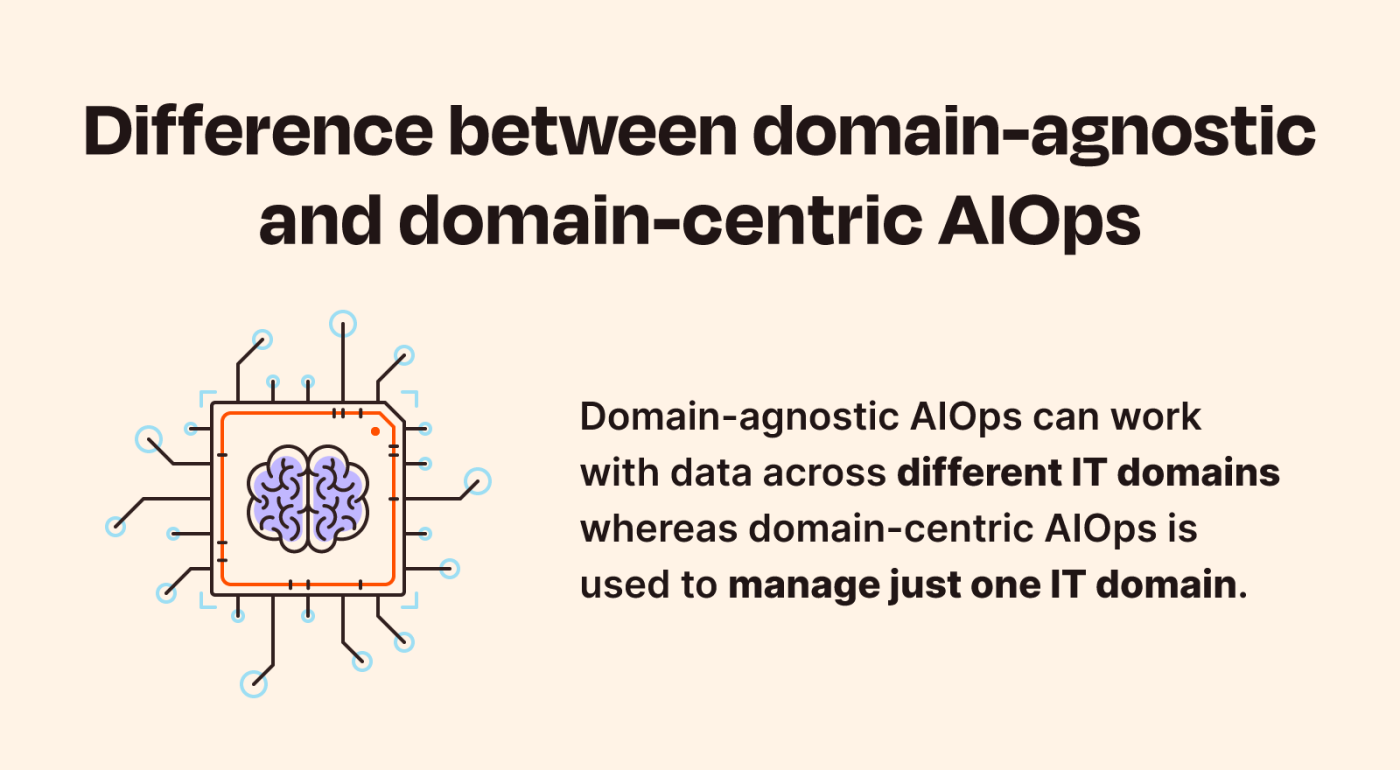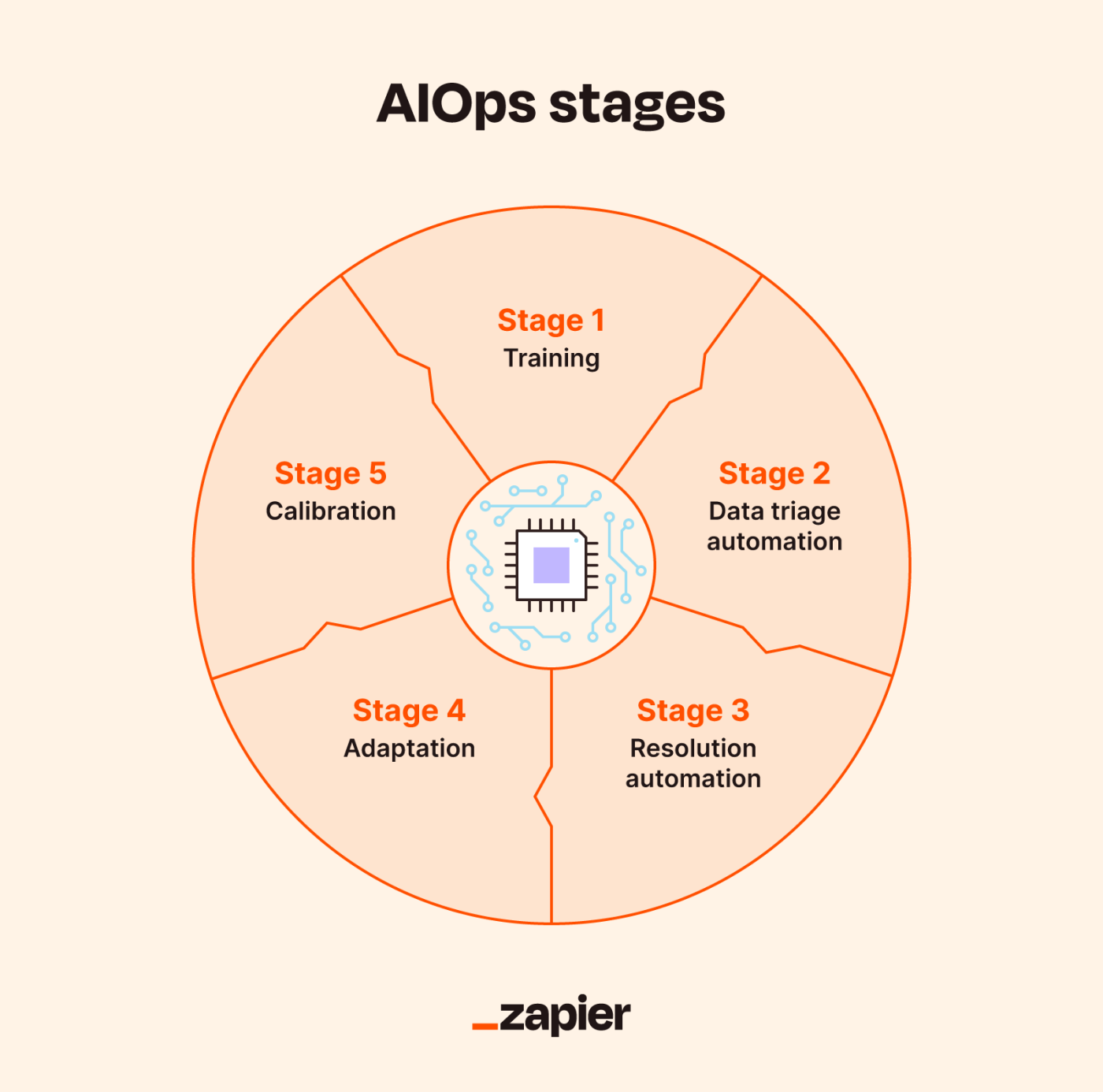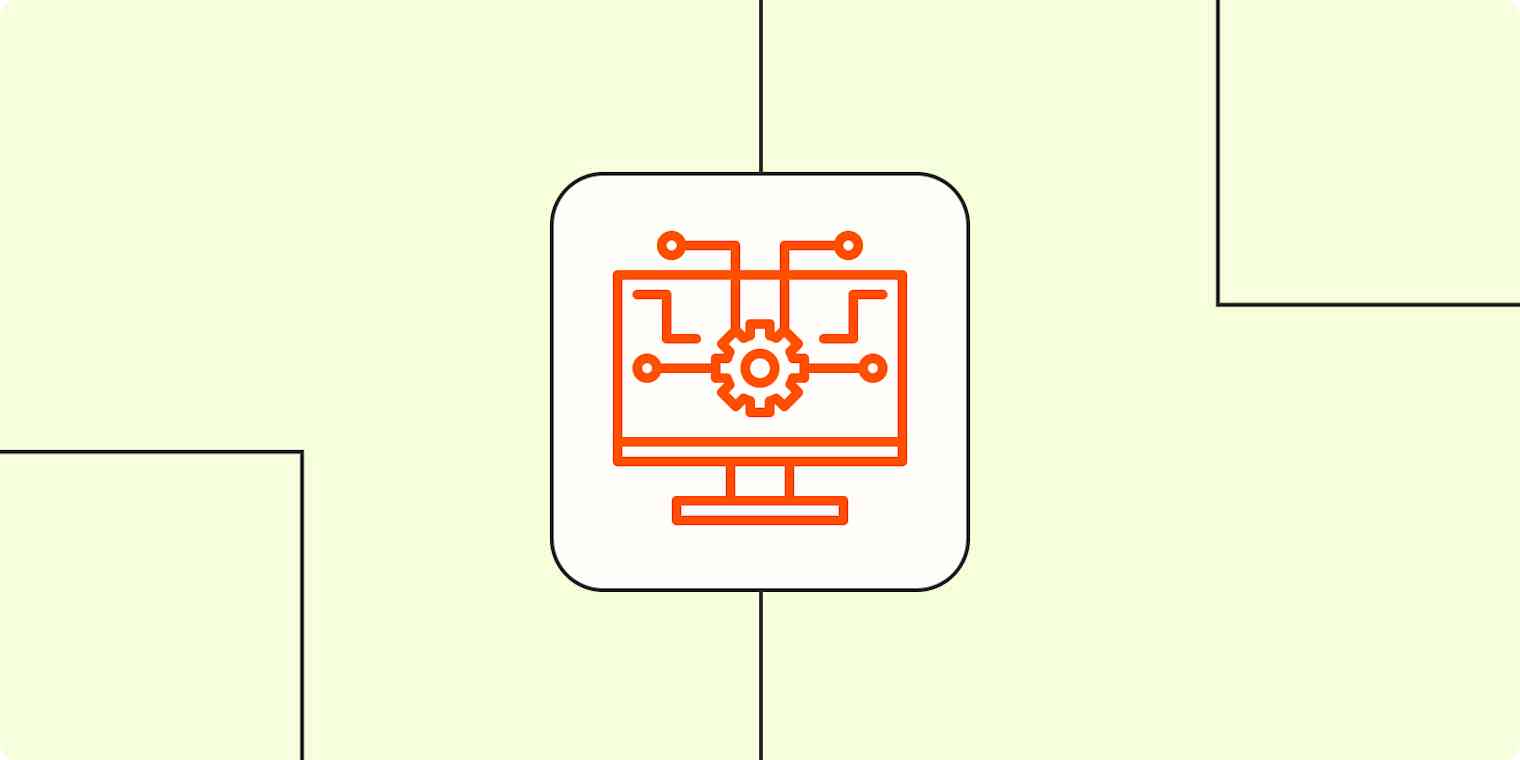My dog, like all dogs, loves going outside. She knows which shoes and shorts I put on to take her for a run, and if she sees me put them on, she jumps up and stands by the drawer where her leash lives. If I change into anything else, she just keeps lying there staring at the door with the ennui of a French New Wave actress. But what's more impressive is that sometimes she can even tell by the way I move through the house that I'm about to change into those clothes.
Dogs don't know what running clothes are, per se, but they pick up easily on patterns of behavior. They can even predict behavior and react preemptively. AIOps is like that, tracking data and finding patterns undetectable by the naked eye and creating predictive, actionable insights. And, get this: it's even smarter than a dog.
Table of contents:
What is AIOps?

AIOps is artificial intelligence specifically meant for assisting IT operations. It's a way of using various AI processes like natural language processing (NLP) and machine learning to support, streamline, and enhance common IT processes.
Like other forms of AI in business contexts, it can be used to give insights to human operators, synthesize more data faster than a human can, or even replace human effort by automating tedious actions.
AIOps components
To give you a better understanding of the role AI can play in IT operations, let's break AIOps down into some of its essential components. While the capabilities of AI are continuing to grow—and may include even more notable ones by the time you read this—these are some of the fundamental functions it can offer IT teams.
Machine learning: An AIOps platform's ability to adapt through machine learning is one of its most important components. This allows it to not only recognize patterns in data but also align actions, insights, and projections at scale and over time.
Natural language processing: In operational triage scenarios that depend on the nuances of communication, natural language processing helps AIOps more intuitively perform tasks like analyzing unstructured data or processing incident reports.
Essential IT data: IT data is the kibble that keeps the AIOps dog running. From performance metrics to error logs to application monitoring, these platforms aggregate the data produced by your essential IT processes.
Big data analysis: A major function of AIOps is synthesizing massive amounts of varied data. Through processes like machine learning and NLP, these platforms can scan through virtually limitless amounts of simple or complex data to discover patterns, spot trends, or determine root causes.
Forecasting: AIOps platforms can also go beyond the patterns that currently exist in datasets—they can forecast trends, predict outcomes, and suggest resolutions.
Automation: This wouldn't be a Zapier piece without a workflow automation shoutout. Like many other AI use cases, AIOps can turn these data-driven insights into scripts, run books, and actions to take basic IT tasks off team members' plates.
How does AIOps work?
AIOps works by collecting inhumanly large amounts of data of varying complexity and turning it into actionable resources for IT teams. Quickly scanning through exponentially more data points, matrices, and tensors than humans could in a lifetime, AIOps can recognize trends and forecast outcomes with unparalleled accuracy and efficiency.
The depth of this analysis can identify root causes that may not be apparent to human users who can't see the same weights and biases of the data. Using all this data, these platforms can then suggest resolutions, connect the dots on seemingly disparate incidents, and even handle actions and resolutions autonomously, freeing up IT teams to tackle more value-forward tasks.
Domain-agnostic vs. domain-centric
When shopping around AIOps tools, you'll likely encounter these two labels. The real difference is domain scope.
Domain-agnostic AIOps can work with data across different IT domains. That means if your IT operations have complex needs to manage, monitor, or otherwise access data from more than one domain, you're looking for a domain-agnostic tool.
Domain-centric AIOps can be used to manage just one IT domain. If your team's IT operations functions only revolve around data and applications in a single network, domain-centric tools are likely a better choice since they may have more robust functionality for your use case.

What are the benefits of AIOps?
The benefits of AIOps revolve around the possibilities opened up by automation and mass data harvesting and analysis. Here's how those possibilities can help.
Broader data collection: Every interaction, incident report, application statistic, and network diagnosis is another piece of data you may be able to gain insight from. AIOps tools let none of it go to waste, collecting everything to find the bigger picture.
Automatic data processing: AIOps offers a way to automatically analyze and interpret virtually limitless amounts of information in a flash.
More actionable data: All the data in the world doesn't amount to much if you can't act on it. Through advanced analysis, AIOps can turn raw data into actionable insights your IT teams can use to implement changes, resolve incidents, shore up security vulnerabilities, and much more.
Faster root cause determination: By synthesizing huge amounts of data, incident logs, and resolution information, AIOps can discover causal patterns that may not be apparent to the IT teams actively working to resolve incidents and can then determine potential root causes almost instantaneously.
Lower mean time to resolution (MTTR): As incidents come in, IT teams can be better equipped to handle them with instantaneous AIOps insights that synthesize historical and incoming incidents on the fly.
Increased uptime: With lower MTTR comes, ultimately, higher uptime and greater reliability. You could argue this is the ultimate goal of AIOps across the board.
Task automation: AIOps can take all those actionable data and insights and act on them, saving IT teams hundreds of hours on low-level repetitive tasks.
Lower operational costs: Through automation, AIOps can stand in for various tasks that would require additional resources. Predictive insights can even help IT teams preempt costly unexpected downtime.
Increased employee satisfaction: IT team members will appreciate the streamlined IT processes, increased access to useful data, and ability to have repetitive tasks handled automatically.
What are the drawbacks of AIOps?
For all its potential benefits, AIOps isn't without its detractors. These drawbacks won't be true for all users and all use cases, but they're worth keeping in mind.
Implementation complexity: AIOps tools come with their share of complexity to implement. Rollouts can take time, training, and additional staffing, even if they're well worth the effort in the long run.
Potential for long-term horizon: Solutions of this complexity will also come with a learning curve and may take time for teams to learn how to fully leverage, so businesses may not see cost savings on lower IT overhead immediately.
High upfront cost: Comprehensive AIOps tools can fetch a hefty price tag, but over time, they can return massively on that value.
Long-term maintenance: These complex solutions will also need to be maintained, monitored, and updated over time, which will come with ongoing IT scoping and staffing considerations.
Stages of AIOps
The stages of AIOps implementation are similar to those of other AI models, cycling from training to automation to ongoing adaptation.
Stage 1: Training
During this stage, AIOps collects data specifically labeled to train its machine learning algorithms. This is the foundation of good AI, ensuring that the algorithms are set on the right track to continue extracting data, predicting patterns, learning from that data, and then adapting to changes in data effectively.
Stage 2: Data triage automation
Automatic raw data collection in and of itself can be useful, but that's only half the equation. Once trained, AIOps then starts automating data triage, combing through the debris of raw data to identify, group, and flag it appropriately, and then apply the insight to prioritize the data to further analyze or act upon.
Stage 3: Resolution automation
When AIOps can effectively segment data and hierarchize (a real word I've never used before) it, it can then be tasked with automated resolutions associated with that data. This works best for resolutions with clear links between sets of data and definite, related actions.
Stage 4: Adaptation
Things change. Users change, applications change, the way users use the same applications changes. For AIOps to be reliable at scale and over time, it has to be adaptable. Through machine learning, AIOps can keep up with those changes by continuing to collect and analyze data and then make adjustments based on patterns in that data.
Stage 5: Calibration
As smart as AIOps is, it's not a set-it-and-forget-it solution. While machine learning does allow it to progressively grow its understanding of data and behavior, it's important for operators to continue monitoring, testing, and adjusting it.

AIOps use cases
To give you an idea of how businesses like yours might use AIOps to support their IT departments, here are a few use cases.
Consolidating similar incidents
IT teams can use AIOps to automatically identify key similarities in incidents to create smart, consolidated alerts. This prevents individual IT team members from getting overwhelmed by an onslaught of separate notifications for incidents revolving around the same issue, helping them focus on resolutions.
Automated resolution suggestions
AIOps can collect data from issue logs and resolution documentation to suggest possibilities for similar tickets later. This helps spread potentially segmented knowledge across departments and cuts down on MTTR.
Predicting future risks
Through machine learning, AIOps can synthesize historical data, home in on trends, and follow those trends to offer insights into potential issues before they arise. IT teams can work on finding resolutions before tickets start flowing in for these vulnerabilities.
Root cause analysis
IT team members can deploy AIOps during resolution processes to help them find root causes faster. Through machine learning, AIOps can continue gaining insights from both past issues and new ones to help team members get to the bottom of incidents.
Automation of ticket responses
IT teams can bring AIOps into resolution workflows to automate basic tasks like ticket responses. By removing this step from the process, AIOps frees team members up to get working on solutions sooner, while end users get a more consistent, predictable experience.
Automation of ticket resolution
Over time, AIOps can even resolve tickets autonomously. By systematically finding reliable solutions to common issues, AIOps can execute clearly defined actions instantaneously and without direct supervision to keep common incidents from ever becoming workflow-clogging tickets.
How to implement AIOps
If you're ready to bring AIOps into your IT department, the rollout itself will be fairly involved. Here's how to get to that point by determining whether AIOps is right for your team and which types of tools you'll need.
Step 1. Consult with your IT team: Before you get started, have a conversation with your IT team. Find out what types of data and automation functionality could support them best.
Step 2. Find a product to fit needs and growth projections: Your IT team should be able to help find product options that match their network and utilization needs. It should also help to talk with them about how those needs might change in the foreseeable future.
Step 3. Determine implementation capability: Implementation will be no small feat, so it's important to know for sure what kind of resources it'll require for the product you pick. Make sure you've got the staffing and training necessary to make it happen.
Step 4. Create a realistic plan and timeline for rollout: Once you've got a product picked and are sure you have the resources to put it into action, work out a realistic plan and timeline for rollout.
Step 5. Demonstrate value to stakeholders: Your final roadblock before implementation could be value proof. Consider how much network downtime and how much time streamlined IT operations could save, and then calculate what those savings could amount to over time.
Even if you don't decide AIOps is right for your needs yet, AI is going to continue changing how businesses operate. In an IT context, the value AI represents for faster MTTR, less repetitive work for employees, more uptime, and higher end-user satisfaction is hard to refute.
In the meantime, Zapier's no-code implementation can make implementing automation for your IT team a walk in the park.
Related reading:






